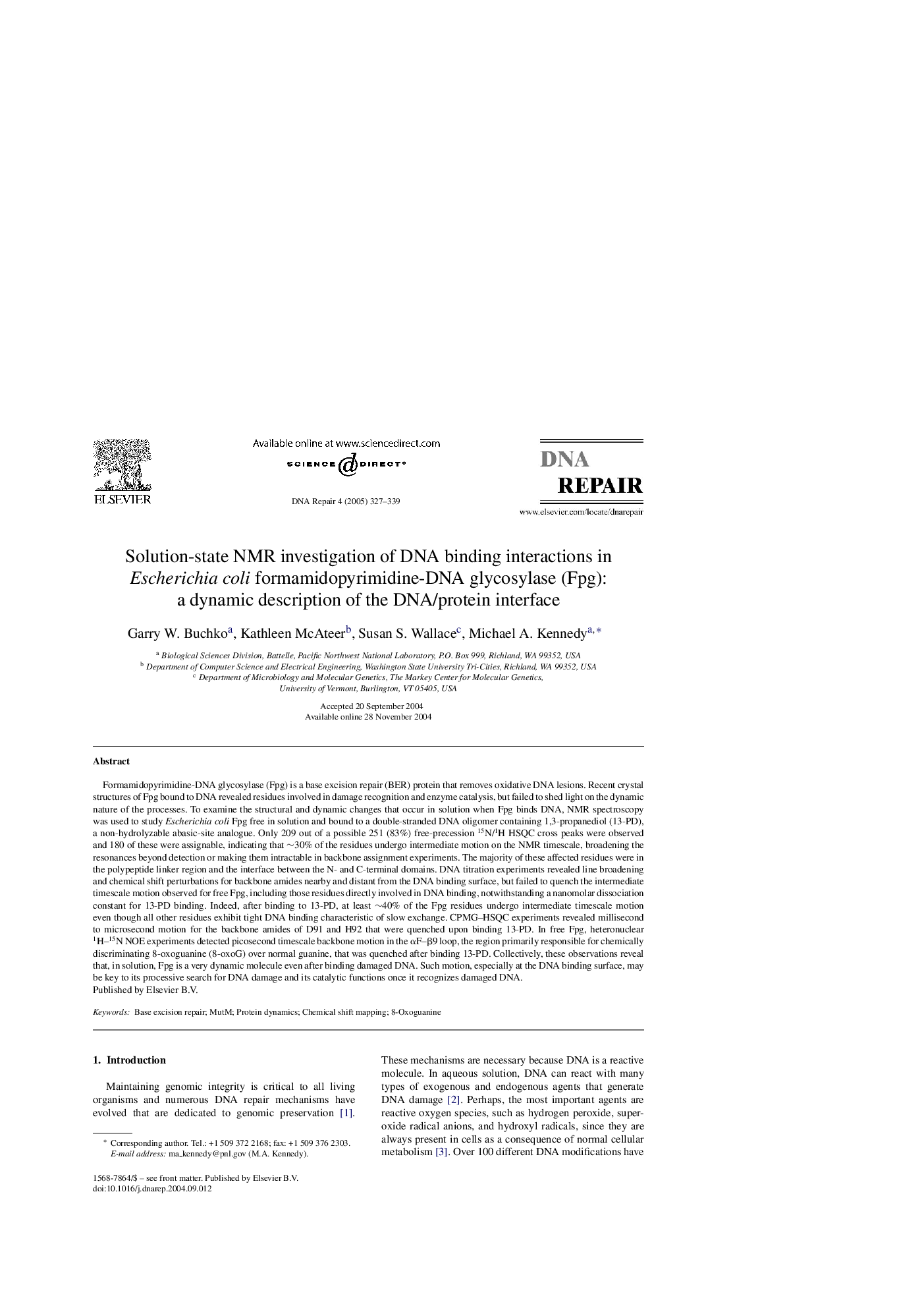| کد مقاله | کد نشریه | سال انتشار | مقاله انگلیسی | نسخه تمام متن |
|---|---|---|---|---|
| 10823769 | 1061935 | 2005 | 13 صفحه PDF | دانلود رایگان |
عنوان انگلیسی مقاله ISI
Solution-state NMR investigation of DNA binding interactions in Escherichia coli formamidopyrimidine-DNA glycosylase (Fpg): a dynamic description of the DNA/protein interface
دانلود مقاله + سفارش ترجمه
دانلود مقاله ISI انگلیسی
رایگان برای ایرانیان
کلمات کلیدی
موضوعات مرتبط
علوم زیستی و بیوفناوری
بیوشیمی، ژنتیک و زیست شناسی مولکولی
زیست شیمی
پیش نمایش صفحه اول مقاله

چکیده انگلیسی
Formamidopyrimidine-DNA glycosylase (Fpg) is a base excision repair (BER) protein that removes oxidative DNA lesions. Recent crystal structures of Fpg bound to DNA revealed residues involved in damage recognition and enzyme catalysis, but failed to shed light on the dynamic nature of the processes. To examine the structural and dynamic changes that occur in solution when Fpg binds DNA, NMR spectroscopy was used to study Escherichia coli Fpg free in solution and bound to a double-stranded DNA oligomer containing 1,3-propanediol (13-PD), a non-hydrolyzable abasic-site analogue. Only 209 out of a possible 251 (83%) free-precession 15N/1H HSQC cross peaks were observed and 180 of these were assignable, indicating that â¼30% of the residues undergo intermediate motion on the NMR timescale, broadening the resonances beyond detection or making them intractable in backbone assignment experiments. The majority of these affected residues were in the polypeptide linker region and the interface between the N- and C-terminal domains. DNA titration experiments revealed line broadening and chemical shift perturbations for backbone amides nearby and distant from the DNA binding surface, but failed to quench the intermediate timescale motion observed for free Fpg, including those residues directly involved in DNA binding, notwithstanding a nanomolar dissociation constant for 13-PD binding. Indeed, after binding to 13-PD, at least â¼40% of the Fpg residues undergo intermediate timescale motion even though all other residues exhibit tight DNA binding characteristic of slow exchange. CPMG-HSQC experiments revealed millisecond to microsecond motion for the backbone amides of D91 and H92 that were quenched upon binding 13-PD. In free Fpg, heteronuclear 1H-15N NOE experiments detected picosecond timescale backbone motion in the αF-β9 loop, the region primarily responsible for chemically discriminating 8-oxoguanine (8-oxoG) over normal guanine, that was quenched after binding 13-PD. Collectively, these observations reveal that, in solution, Fpg is a very dynamic molecule even after binding damaged DNA. Such motion, especially at the DNA binding surface, may be key to its processive search for DNA damage and its catalytic functions once it recognizes damaged DNA.
ناشر
Database: Elsevier - ScienceDirect (ساینس دایرکت)
Journal: DNA Repair - Volume 4, Issue 3, 2 March 2005, Pages 327-339
Journal: DNA Repair - Volume 4, Issue 3, 2 March 2005, Pages 327-339
نویسندگان
Garry W. Buchko, Kathleen McAteer, Susan S. Wallace, Michael A. Kennedy,